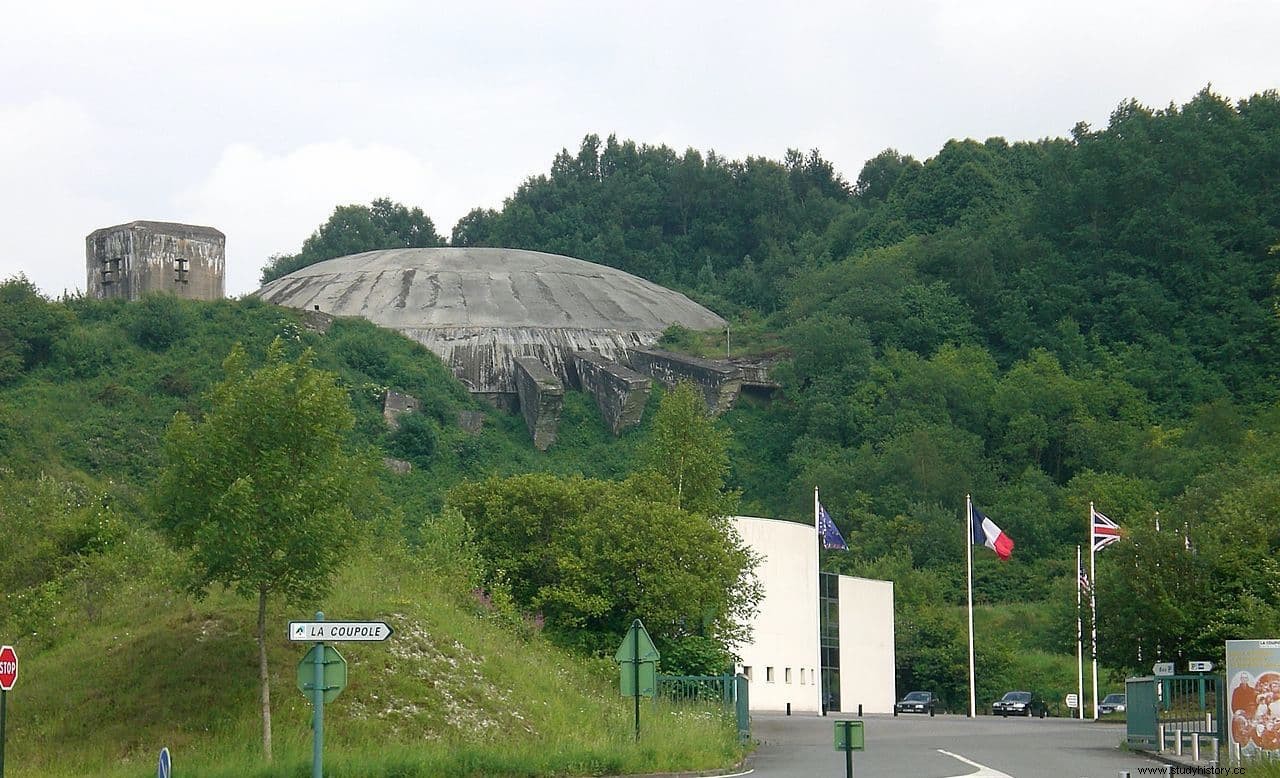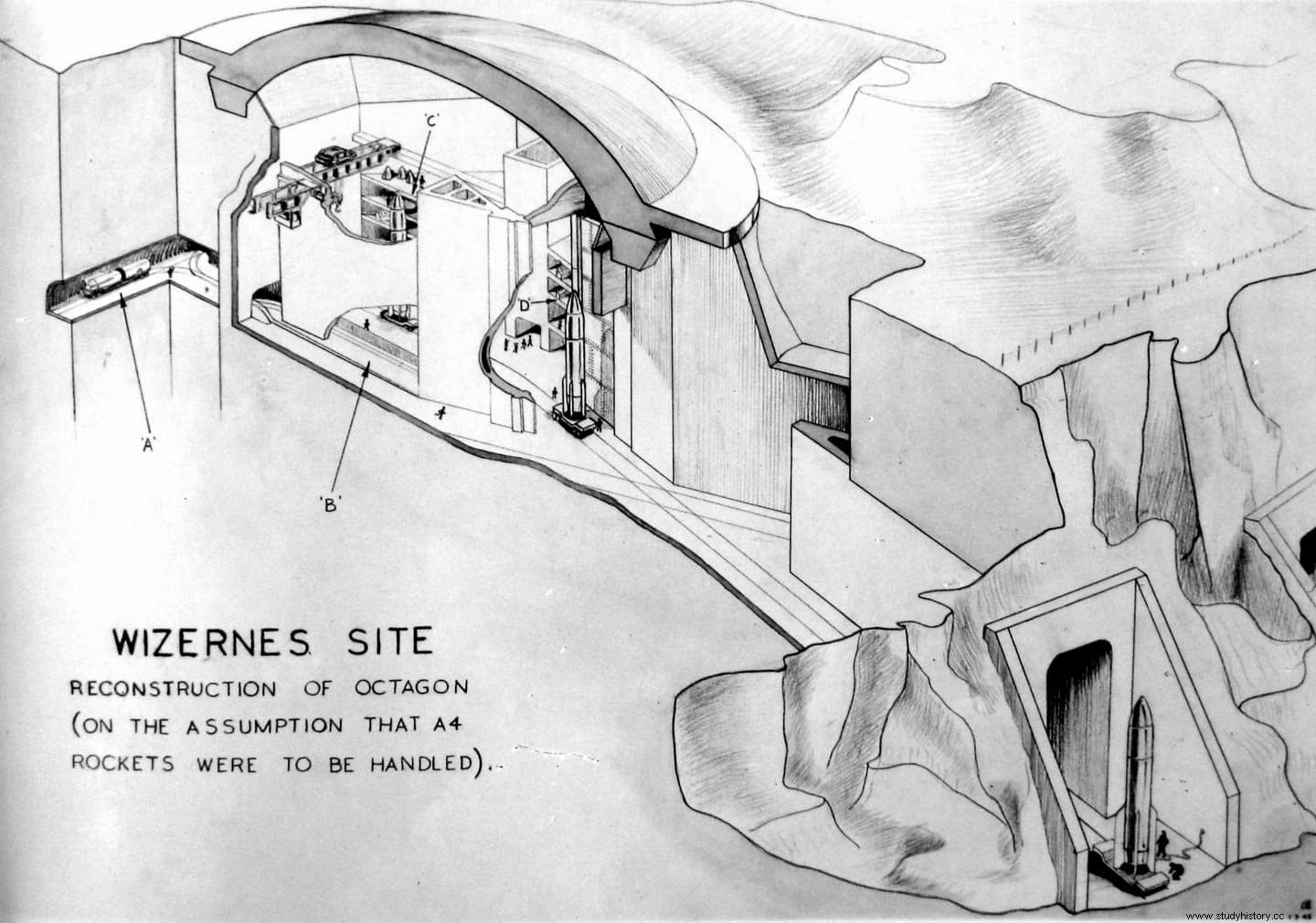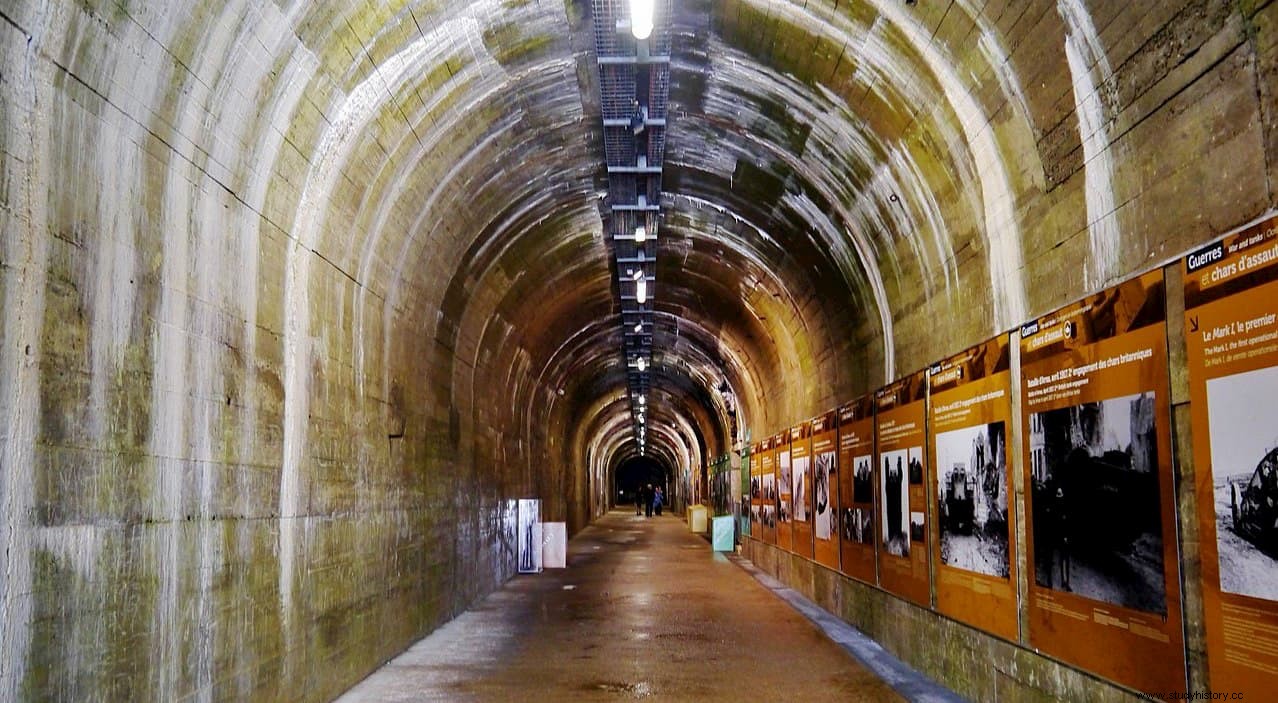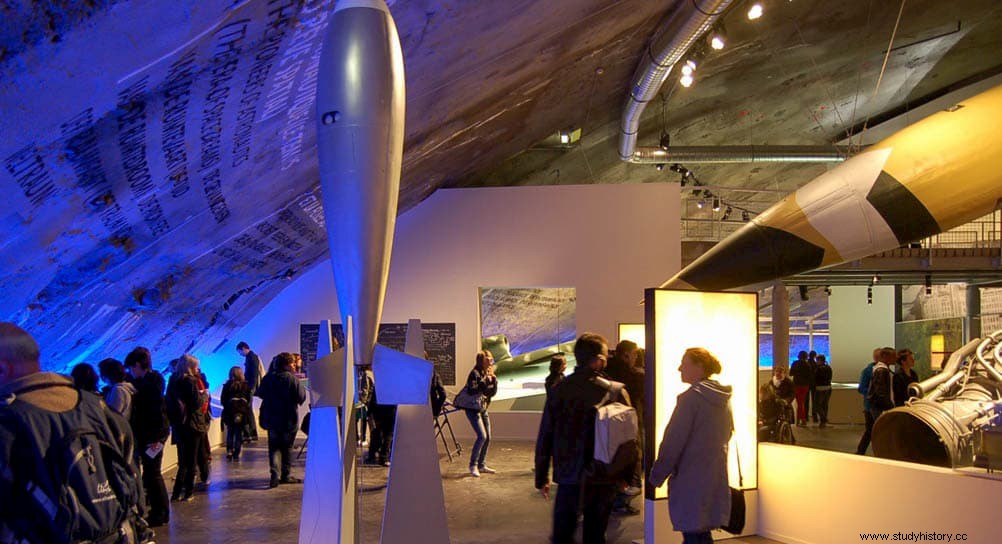During World War II the Germans built numerous defensive and offensive structures along the French coast and, in particular, in the Strait of Calais, the area closest to the British coast. One of them was the fortress of Mimoyecques, to which we have already dedicated an article.

Another, just as impressive, would be the Dome of Helfaut, built in the commune of the same name next to the town of Saint-Omer. Work on what was to be the V2 launch pad began in November 1943, codenamed Bauvorhaben 21 (Construction Project 21) and Schotterwerk Nordwest (Northwest Gravel Mill).
It is an enormous concrete dome under which, in an old chalk quarry, tunnels, warehouses, barracks and launch silos were excavated.
The original project by architect Albert Speer and engineer Franz Xaver Dorsch called for a million tons of concrete, and included a 7-kilometre network of tunnels as well as a liquid oxygen production plant. The dome that protects everything is 71 meters in diameter, 5 meters thick and weighs 55,000 tons.

Just under the dome, a large hexagonal room was arranged, which must have measured 41 meters in diameter by 33 meters in height, occupying the space of about 10 intermediate levels. In it the rockets would be prepared for launch. Two tunnels called Gustav started from this room. and Gretchen , each 4 meters wide by 17 meters high, at the end of which were the launch platforms, where the rockets were taken by rail.
To carry out the works, in which some 1,400 workers participated, qualified German workers, miners from the Westphalia region, Frenchmen from the Compulsory Labor Service, and Soviet prisoners were used.

The dome was designed by the engineer Werner Flos, who decided to build it first on top of the quarry, and then dig the tunnels and the rest of the complex below, to protect it from Allied attacks. These, who had already discovered the plan in January 1944 thanks to the reconnaissance planes, did not stop launching constant and regular attacks on the complex.
The German plan was to launch dozens of rockets a day over southern England. But the works would never be completed nor would the facilities enter service, although the attacks by Allied aviation would hardly leave a mark on the dome. But the entire area around it and even the foundations were so damaged that the work could not continue.

In September 1944 the site was captured by Allied troops, and Churchill ordered its partial demolition. Abandoned since then, the place was recovered in 1997 to turn it into a museum. To do this, another two meters were excavated under the dome and the work on the original tunnels was completed. An elevator installed at the end of the entrance tunnel takes visitors to the hexagonal room under the dome, where the main exhibition is located, in which a history of German ballistic missiles can be seen. Today it also houses a planetarium.
